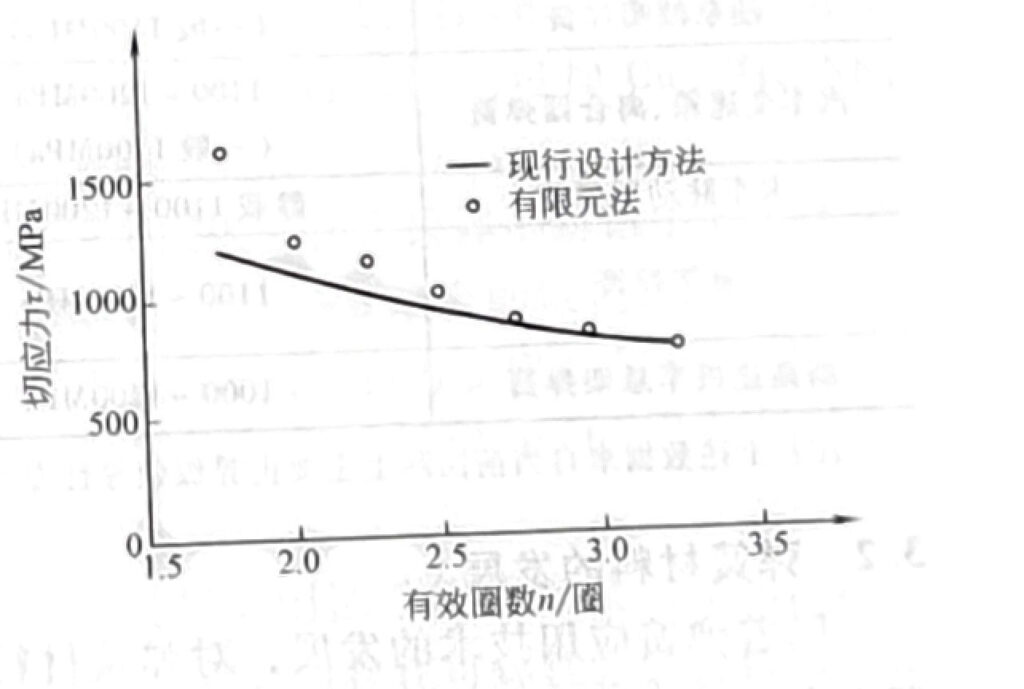Development of spring design
At present, the widely used spring stress and deformation formulas are derived from the mechanics of materials. Without some practical experience, it is difficult to design and manufacture high-precision springs. With the increase of design stress, many previous experiences are no longer applicable. For example, as the design stress of the spring increases, the spiral angle increases, and the fatigue source of the spring will be transferred from the inside to the outside of the spring coil. To this end, precise analytical techniques for springs must be used, and the current widely used method is the finite element method (lower EM).
In addition to sufficient fatigue life, the vehicle suspension spring is characterized by small permanent deformation, that is, the anti-relaxation performance shall be within the specified range; otherwise, due to different deformation of the spring, the center of gravity of the body will shift. At the same time. The impact of environmental corrosion on its fatigue life shall be considered. With the increase of vehicle maintenance period, more strict requirements for permanent deformation and fatigue life are put forward. Therefore, high-precision design method must be adopted. The finite element method can predict the effect of stress fatigue life and permanent deformation of spring in detail, and accurately reflect the relationship between material and spring fatigue life and permanent deformation.
In recent years, the finite element design method of spring has entered the practical stage, and there are many reports of practical value, such as the influence of helical angle on spring stress; Relationship between stress and fatigue life calculated by finite element method, etc.
Figure 1-8 Comparison between results obtained by current calculation method and finite element method

Figure 1-8 shows the comparison between the current design method and the finite element method. For springs of the same structure, under the same load, it can be seen from the figure that the results obtained by the two methods are quite different for the stress of high stressed springs with less effective coils or large spiral angles. This is because with the increase of spiral angle, the load eccentricity is increased, the outer diameter or lateral deformation of the spring is larger, so the stress is larger. It can not be accurately reflected by the current design calculation method, but can be reflected by the finite element method. The finite element analysis method of spring has been put into practice in the country with high spring technology level. Although China has developed this technology, it has not yet formed a practical model.
In addition, an optimized design was introduced into the spring design process. The structure of spring is simple, the function is simple, and the parameters affecting the structure and performance are less. Therefore, the designers have used analytical method, graphic method or graphic analysis method to seek the optimal design scheme very early, and have achieved some results. With the development of computing technology, the optimization design of nonlinear programming by computer has achieved results (see Section 11 of Chapter 10).
Reliability design is a series of analysis and design technologies adopted to ensure the reliability of the designed product. Its function is to make the designed product reach the specified reliability target value based on the prediction and prevention of possible failure of the product. It is a supplement and improvement of traditional design methods. The spring design has made some progress in the use of reliability technology (see Section 12 of Chapter 10), but further improvement requires the development and accumulation of data.
With the development of computer technology, various versions of missile-through degree have been compiled at home and abroad, which provides convenient conditions for the development and innovation of missile-through technical personnel. The application design program has completed the arc clutch spring and drum suspension which are difficult to design. With the development of spring application technology, many new problems need to be noticed and solved for designers. Such as material, spring development, etc.
It is difficult to calculate the influence of strong pressure and shot blasting treatment on the fatigue property and relaxation property in the design, which depends on the experimental data. If the number of circles calculated according to the current design formula, the spring rigidity is smaller than the design rigidity value, and the design requirements can be met only when the number of effective circles is smaller. The current trend in the design of mass-produced spring products, taking the maximum working shear stress and fatigue life requirements as an example, is listed in Table 1-5.
Table 1-5 Design Trend of Current Mass Production Springs
| Product category | Maximum working shear stress | Relevant important requirements |
| Spring of general mechanical structure | Static load 900-1200MPa | |
| Dynamic load 900-1000MPa | Start to have fatigue life requirements | |
| Helical torsion spring | 900-1000MPa | |
| Engine valve spring Oil pump nozzle spring |
950 -1200MPa (Generally 1100MPa) |
Fatigue life requirements 2.3 ×107 Times, reliability>90% |
| Automotive gearbox and clutch spring | 1100 -1200MPa (Generally 1100MPa) |
With relaxation requirements,Fatigue life requirements (3~10) ×105 Times |
| Truck Parking Spring | Static load 1100-1200MPa | With relaxation requirements |
| Suspension spring | 1100 -1200MPa | Corrosion Fatigue Life Requirements (3~5) ×105 Times |
| Suspension spring of new high-speed locomotive | 1000 -1200MPa |
Note: The above data is from the product drawings and information of the major world-class leading professional companies in the world.






